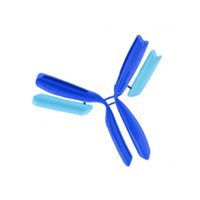PC69 Sigma-AldrichAnti-Fas (Ab-1) (321-335) Rabbit pAb
Anti-Fas (Ab-1) (321-335), rabbit polyclonal, recognizes the ~44-46 kDa Fas in HL60 cells. It is validated for use in WB and IHC (frozen and paraffin sections).
More>> Anti-Fas (Ab-1) (321-335), rabbit polyclonal, recognizes the ~44-46 kDa Fas in HL60 cells. It is validated for use in WB and IHC (frozen and paraffin sections). Less<<Synonyms: Anti-APO-1, Anti-CD95
Recommended Products
Overview
| Replacement Information |
|---|
Key Spec Table
| Species Reactivity | Host | Antibody Type |
|---|---|---|
| H, M, Op, R | Rb | Polyclonal Antibody |
| Description | |
|---|---|
| Overview | Recognizes the ~44-46 kDa Fas protein in HL60 cells and color tissue. |
| The immunogen, Fas Peptide (Cat. No. PP62), is available for competition studies. | |
| Catalogue Number | PC69 |
| Brand Family | Calbiochem® |
| Synonyms | Anti-APO-1, Anti-CD95 |
| Product Information | |
|---|---|
| Form | Liquid |
| Formulation | In 0.05 M sodium phosphate buffer, 0.2% gelatin. |
| Positive control | HL-60 or colon tissue |
| Preservative | ≤0.1% sodium azide |
| Quality Level | MQ100 |
| Physicochemical Information |
|---|
| Dimensions |
|---|
| Materials Information |
|---|
| Toxicological Information |
|---|
| Safety Information according to GHS |
|---|
| Safety Information |
|---|
| Product Usage Statements |
|---|
| Storage and Shipping Information | |
|---|---|
| Ship Code | Blue Ice Only |
| Toxicity | Standard Handling |
| Storage | +2°C to +8°C |
| Do not freeze | Yes |
| Packaging Information |
|---|
| Transport Information |
|---|
| Supplemental Information |
|---|
| Specifications |
|---|
| Global Trade Item Number | |
|---|---|
| Catalogue Number | GTIN |
| PC69 | 0 |
Documentation
Anti-Fas (Ab-1) (321-335) Rabbit pAb SDS
| Title |
|---|
Anti-Fas (Ab-1) (321-335) Rabbit pAb Certificates of Analysis
| Title | Lot Number |
|---|---|
| PC69 |
References
| Reference overview |
|---|
| Cheng, J., et al. 1995. J. Immunol. 154, 1239. Stanger, B.Z., et al. 1995. Cell 81, 513. Grell, M., et al. 1994. Eur. J. Immunol. 24, 2563. Owen-Schaub, L.B., et al. 1994. Cancer Res. 54, 1580. Itoh, N. and Nagata, S. 1993. J. Biol. Chem. 268, 10932. Oehm, A., et al. 1992. J. Biol. Chem. 267, 10709. Watanabe-Fukunaga, R., et al. 1992. J. Immunol. 148, 1274. Itoh, N., et al. 1991. Cell 66, 233. |
Brochure
| Title |
|---|
| Caspases and other Apoptosis Related Tools Brochure |







